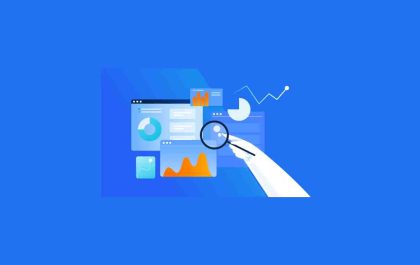Table of Contents
Big Data Definition
Big data is large, more complex [data] sets, especially from new data sources. These data sets are so high that traditional data processing software can’t manage them well. But these high volumes of [data] can be used to address business problems you wouldn’t have been able to tackle before.
Big Data History and Current consideration
“Big data” is relative, the act of gathering and storing vast amounts of information for final analysis is old. The concept gained in the early 2000s when industry analyst articulated the now mainstream definition of the [big data].
Volume
Organizations collect Big data from a variety of sources, including business transactions, and social media from machine [data]. Storing it would’ve been a problem, but new technologies have eased the burden.
Velocity
Big data streams at an unprecedented speed and must be dealt with promptly. RFID, sensors, and smart metering are driving to deal with torrents of [data] in near-real-time.
Variety
Big data comes in different types of formats – structured, numeric [data] in traditional databases to unstructured text, email, video, audio, stock ticker [data], and financial transactions.
What are the Values and Truth?
[Data] has intrinsic value. But it is of no use until it discovers the value. Equally important: How truthful is your [data] and how much you can depend?
Today, [big data] has become the capital. Think of the world’s big tech companies. The large part of the value they offer comes from their [data], which they continually analyze to produce more efficiently.
The technological breakthroughs have been reduced the cost of [data storage], making it easier and less expensive to store [data] than ever. An increased volume of [big data] is now cheap and more accessible; you can make correct and precise business decisions.
Big Data’s History
The concept of [big data] itself is relative, the origins of large [data] sets go back to the 1960s and 1970s when the world of [data] was getting started with the first data centers and the development of the [data].
Around 2005, people just realized how much [data] users generated through Facebook, YouTube, and other online services. Hadoop an open-source framework explicitly created to store and analyze [big data] sets developed that same year. NoSQL began to gain popularity during this time.
How does Big Data Work?
[Big data] works by giving you new insights that open up opportunities and business models.
1. Integrate using Big Data
[Big data] brings data together from many applications and sources. If you see, traditional [data] integration mechanisms, such as ETL (extract, transform, and load) usually are not up to the mark. It requires a new strategy and technology to analyze [big data] sets at terabyte, petabyte.
During integration, you need to bring in [data], process it, and make sure it is formatted and available in the form that your business analysts can get started.
2. Manage Using [Big Data]
[Big data] requires storage. The storage solution can be in the cloud, on-premises. Store [data] in any form you want and bring desired processing requirements, and necessary process engines to those [data] set on-demand basis.
You can find many people who choose their storage solution depending on where their [data] is currently residing. Cloud technology is steadily gaining popularity due to it supports your current compute requirements and enables you to spin up resources as required.
3. Analyze Using [Big Data]
Your investment in [big data] succeeds when you examine and act on your [data]. You can get new clarity with a visual analysis of your varied [data sets].
Explore the data further to make discoveries. Build [data] models with the help of machine learning and artificial intelligence. Put your data to work.
Kamran Sharief
Related posts
Recent Posts
The Importance of Data-Driven Decision-Making for SaaS Startups
At Software as a Service (SaaS) startups, making informed decisions is the cornerstone of success. One invaluable asset every savvy…
Top Decathlon in Shakespear Sarani-Park Circus, Kolkata
Decathlon Shakespear is one of the most extensive sports equipment selling worldwide. Today, more than 90-thousand collaborators of more than…



